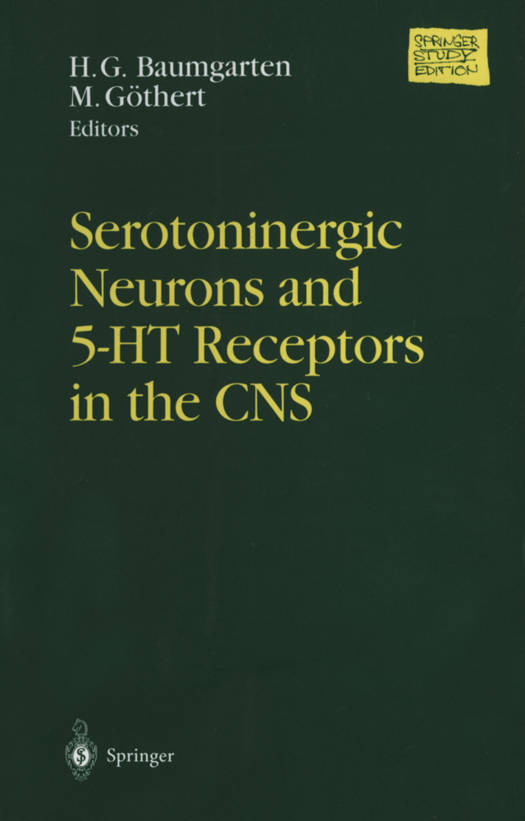
Je cadeautjes zeker op tijd in huis hebben voor de feestdagen? Kom langs in onze winkels en vind het perfecte geschenk!
- Afhalen na 1 uur in een winkel met voorraad
- Gratis thuislevering in België vanaf € 30
- Ruim aanbod met 7 miljoen producten
Je cadeautjes zeker op tijd in huis hebben voor de feestdagen? Kom langs in onze winkels en vind het perfecte geschenk!
- Afhalen na 1 uur in een winkel met voorraad
- Gratis thuislevering in België vanaf € 30
- Ruim aanbod met 7 miljoen producten
Zoeken
Serotoninergic Neurons and 5-Ht Receptors in the CNS
€ 83,95
+ 167 punten
Omschrijving
In 1966, Vittorio Erspamer, the editor of the first monograph within the Handbook of Experimental Pharmacology series that dealt with 5-hydroxy- tryptamine (Vol. XIX) wrote in the Preface: "In a decade of intense and dedicated work, an immense amount of experimental data has been collected, the significance of which . . . has spread into all fields of biology and medi- cine . . . ". Three decades later, a dramatic further increase in our knowledge of all neuroscientific aspects of the serotoninergic system in the CNS has been achieved, and we are witnessing persisting interest in the biology of serotonin of scientists working in various basic biomedical and clinical disciplines. The scientific advance was made possible by significant improvements in analytical and morphological technologies of high sensitivity and cellular/subcellular resolution (e. g., patch clamp techniques, in vivo microdialysis, electrophysi- ological recording techniques, quantitative ligand autoradiography, immuno- histochemistry, cytochemistry, catalytic enzyme histochemistry, and PET / SPECT techniques) and in molecular biology (e. g., in situ hybridization, PCR cloning, DNA transfection studies, and targeted gene disruption). Particular progress has been made in the anatomy, physiology, and pharmacoogy of ' serotoninergic neurons and their modulatory role in brain functions, in s roto- nin receptors and their transduction mechanisms, and in the potential role of serotonin in neuropsychiatric diseases, such as eating disorders, antisocial personality disorders, obsessive-compulsive disorder, seasonal affective disor- der, and major depression.
Specificaties
Betrokkenen
- Uitgeverij:
Inhoud
- Aantal bladzijden:
- 767
- Taal:
- Engels
- Reeks:
- Reeksnummer:
- nr. 129
Eigenschappen
- Productcode (EAN):
- 9783540667155
- Verschijningsdatum:
- 20/10/1999
- Uitvoering:
- Paperback
- Formaat:
- Trade paperback (VS)
- Afmetingen:
- 156 mm x 234 mm
- Gewicht:
- 1097 g

Alleen bij Standaard Boekhandel
+ 167 punten op je klantenkaart van Standaard Boekhandel
Beoordelingen
We publiceren alleen reviews die voldoen aan de voorwaarden voor reviews. Bekijk onze voorwaarden voor reviews.








